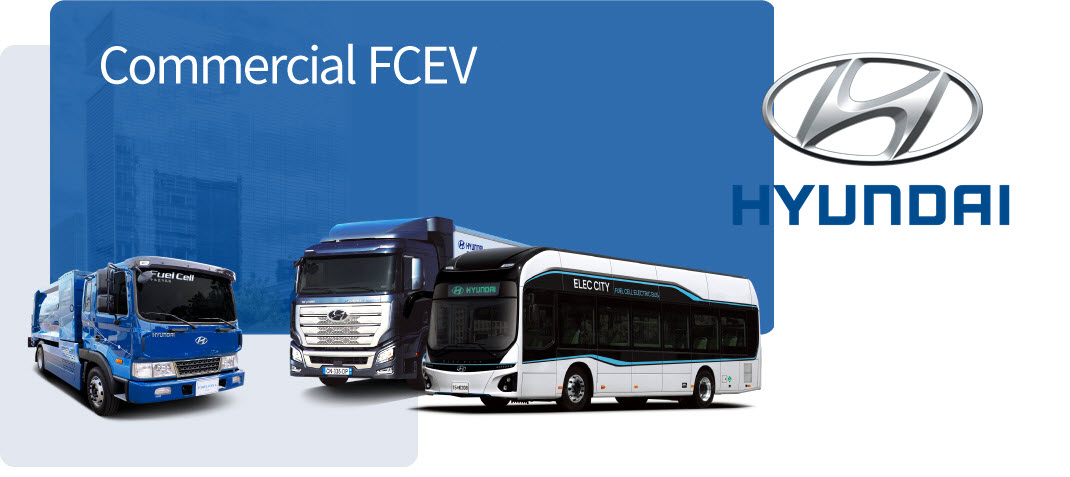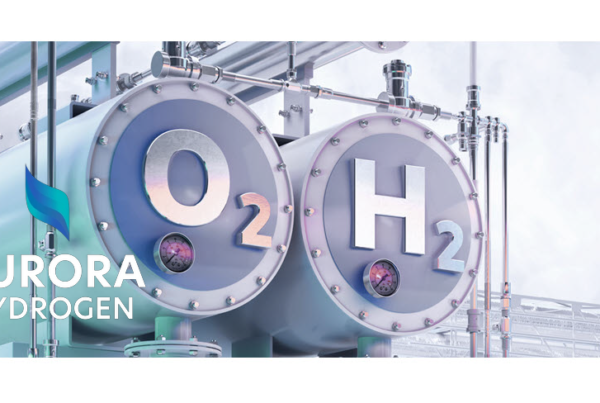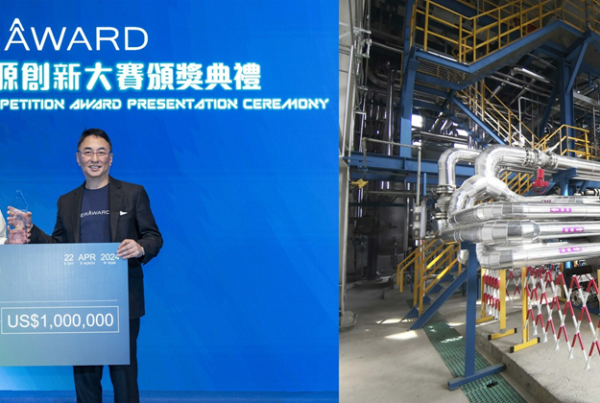
Things are totally different in the world of commercial vehicles and buses. For a commercial FCEV, the potential advantages of it over BEV are clear. Here are Hyundai’s commercial FCEVs.
FCEVs do not emit pollutants in the air. On the contrary, they purify the air while driving. They can fill up the tank faster than BEVs and have longer ranges than BEVs. Hyundai Motor Company so far tried to maximize the efficiency of commercial FCEVs. And here’s how.
Maximizing the Efficiency: Commercial FCEVs

Commercial vehicles need to survive in harsh conditions because they usually need to carry heavy loads and tons of people. They also require a much longer range than an ordinary car. This is why they had diesel engines so far. However, these engines also emit too much pollutants in the air. According to the Korea’s Ministry of Environment, the number of large trucks takes up only one percent of the total number of registered vehicles, yet they emit 24.2 percent of total pollutants emitted in the air every year, which is about 11,223 tons of PM 2.5 particles.
On average, one large truck emits 85.98 kilograms of ultra-fine dust every year, which is 40 times more than a regular vehicle does (2.12 kilograms annually). It would be, then, clear that if we could replace one truck with an FCEV, the air would become much cleaner. According to the McKinsey report, we would be able to reduce 30 percent of the total CO2 when commercial FCEVs take up just 5 percent of the total FCEVs by 2050.
Large FCEV trucks: Perfect for a long-range travel

The Hyundai H2 XCIENT fuel cell truck was developed according to European guidelines. It is powered by a new 190 kW FC system using two same connected stacks. The seven hydrogen tanks provide a storage capacity of almost 35 kg of hydrogen, which give the truck a range of around 400 kilometers.
Though battery-powered trucks are as efficient as hydrogen-powered ones, the cost advantages of hydrogen become clear for applications focused on cargo transport. Because long-haul trucks should be able to travel long ranges, short charging time and the high energy density of on-board hydrogen storage make hydrogen fuel cell systems ideal for powering larger, heavier modes of transport. According to the Mckinsey report , Fuel cells become more cost efficient than batteries as soon as the range exceeds around 100 kilometers.

Ministry of Environment, Ministry of Industry, Ministry of Land, Transport and Maritime Affairs, and other logistics companies located in South Korea, will begin their prototype business to supply FCEV trucks in Gunpo, Okcheon, and Seoul Metropolitan Area between 2021 and 2022. The logistics companies, including CJ Logistics, Hyundai Glovis, and Coupang, will be given five FCEV trucks to use, and more after 2023.
Hyundai plans to bring a total of 1,600 fuel cell trucks onto the Swiss market by 2025 before expanding its sales across other countries in Europe, including Germany, Netherlands, Australia, and Norway. By establishing a joint venture with other hydrogen-related companies in Europe, Hyundai will be able to supply those trucks as a part of the ‘FCEV project’.
The International Truck of the Year (IToY) Truck Innovation Award is determined by a number of experts that represent major trucking magazines from Europe. They have gathered to evaluate breakthrough technological innovations and contributions to energy transition in the commercial vehicle industry so far. The jury voted at Solutrans, an industrial and urban vehicle show held in France last year.
FCEV Garbage trucks: Clean AND Silent

Commercial FCEVs are perfect for cities because they do not make noises and can purify polluted air while driving. Hyundai’s FCEV garbage trucks would be a perfect example. They can pick up garbages in the deepest nights without waking up a single person.

FCEV garbage truck use the same FCEV cell stack system that the Hyundai NEXO has already proven its safety. Each garbage truck has two 95-kilowatt fuel-cell stacks, which feature a maximum 240-kilowatt electric motor output, and a 24.4-kWh battery in the front. With its 12 hydrogen tanks between the cap and the cargo space, a garbage truck can drive up to 599 kilometers when driven as suggested (60 km/h). It can store up to 4.5 tons of cargo, the same as the ones that use Compressed Natural Gas.

Hyundai will also test one of these FCEV garbage trucks after they created an appropriate infrastructure for large-size FCEVs, especially for the city cleaners in Changwon, South Korea, through cooperating with the Ministry of Industry, Changwon city, and Korea Automotive Technology Institute. The plan is expected to increase the FCEV garbage trucks, along with 5-ton mid-size FCEV trucks.
Running Air Purifier in the City: FCEV bus

The FCEV system, however, is much more used in public city buses, because their fixed routes would need relatively less charging stations than private vehicles. The first FCEV bus was developed in 2006, and there came the second-generation in 2009, then the third-generation model in 2018. With a 190-kW high-capacity fuel cell system, an FCEV bus offers a range of 422 kilometers.

FCEVs including buses use electricity generated through an electrochemical reaction between hydrogen and oxygen to drive their wheels. To make sure fuel cells retain their performance for the duration of their life spans, the air intake system eliminates dust and chemicals in the air before supplying it to the fuel cells. The 3-step air purification system – from the air filter, through the membrane humidifier, to the gaseous diffusion layer – available on a Hyundai FCEV bus eliminates 97% of the ultra-fine dust in the air it takes in.
When an FCEV bus is driven for just one kilometer, 4.86 kilograms of air is purified, hence 418,218 kilograms of air if driven for 86,000km a year; It would be the same amount that 85 adults breathe in a year. These buses should contribute to enhancing the air quality because they would be always running in the daytime. Ulsan, Changwon, and Busan are currently operating the FCEV buses on some of the city bus routes, and other cities including Seoul, Gwangju, Seosan, and Asan will begin their operation soon.

The ‘FCEV Vision 2030’ roadmap will help Hyundai and its suppliers invest in R&D and facility expansion, which is expected to manufacture approximately 500,000 FCEVs annually by 2030. The plan has already begun in Busan and Wanju, featuring hydrogen charging stations. And of course, there shall be much more available around us.
Source: Hyundai
Read the most up to date Fuel Cell and Hydrogen Industry news at FuelCellsWorks




